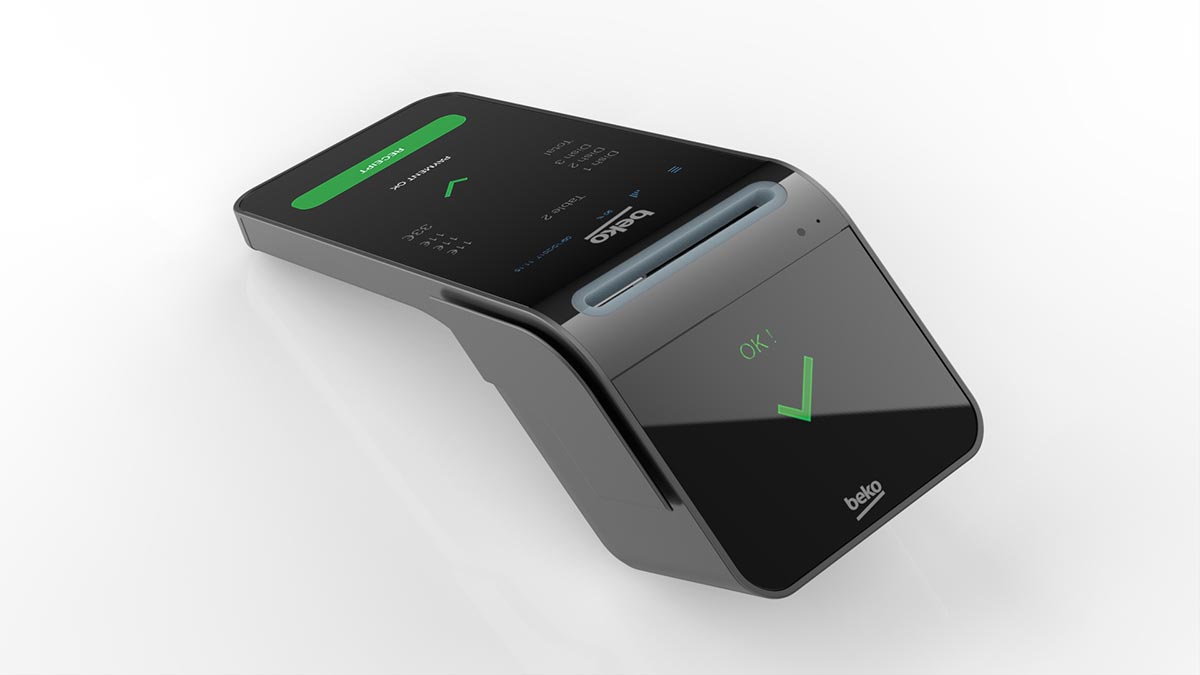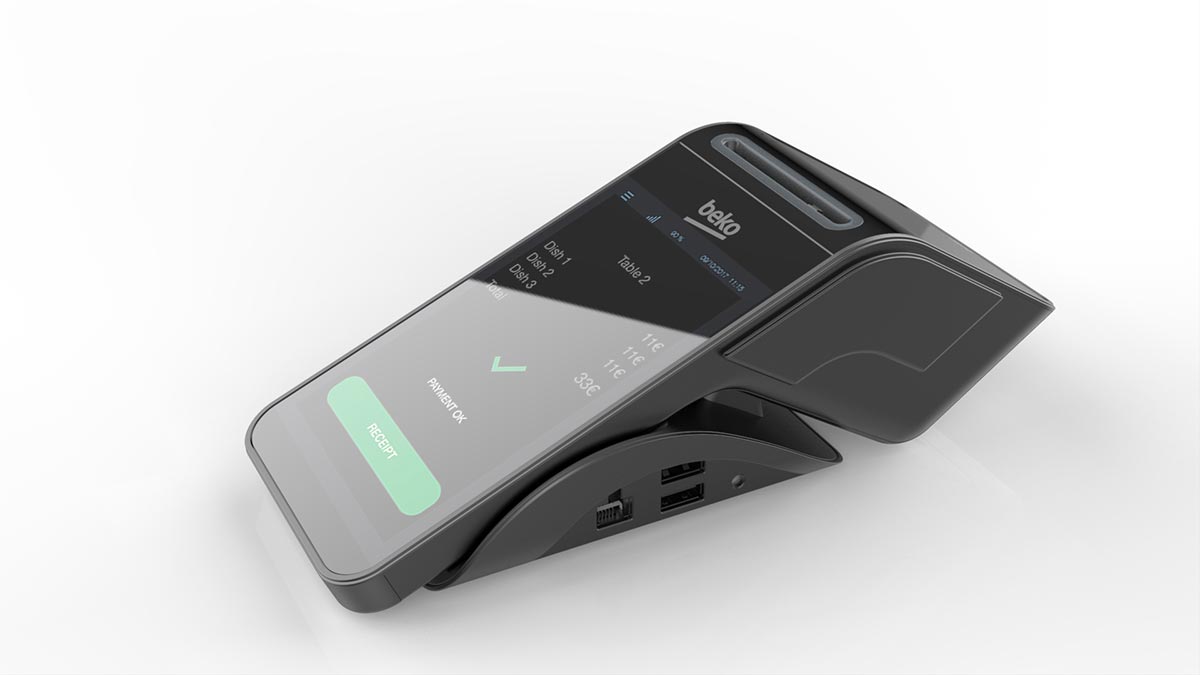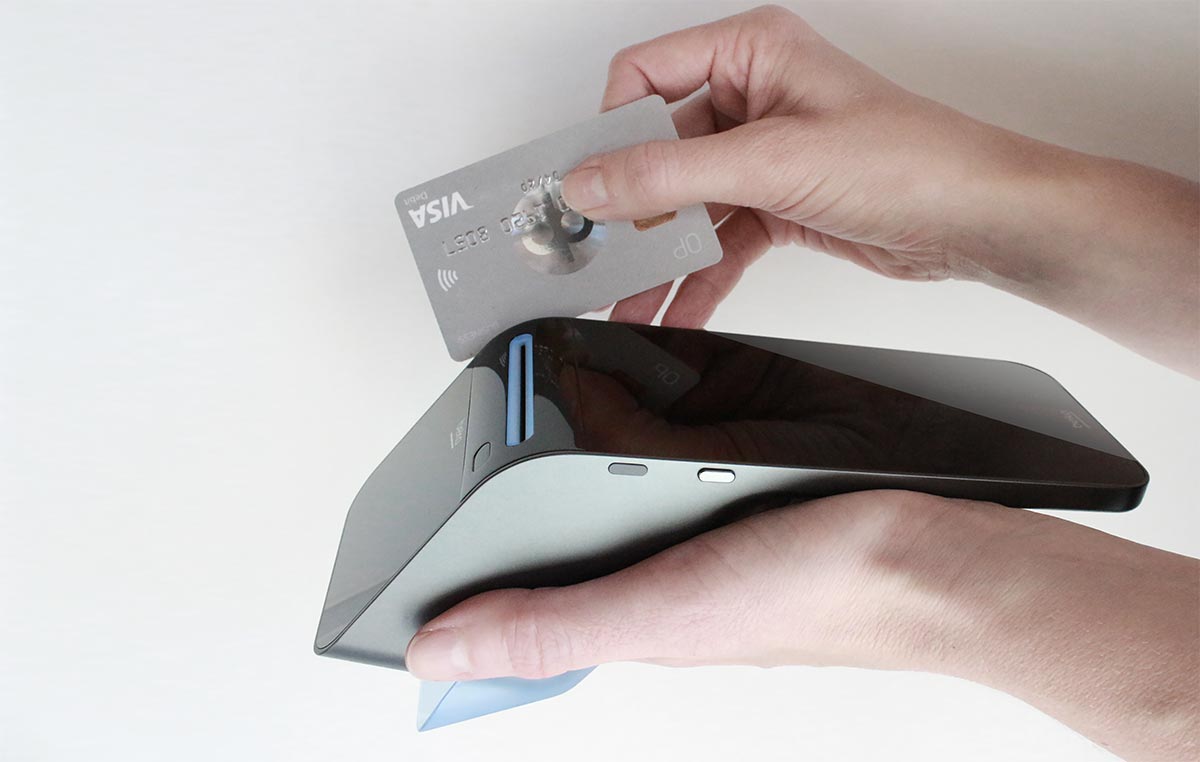Driven by research – Two displays, one canvas.
We conducted field studies in different markets by observing and analyzing the retail payment process. Markets were chosen based on their progressiveness in payment trends. The field study was created as a tool for business decision making.
One of the key observations from the field study was the inefficiency of the payment user experience. This observation led into the insight of the of secondary display. The dual display design is enabling an intuitive and smooth interaction between merchant and the customer. The displays are designed based on the unique needs of the merchant and customer, yet they acknowledge and complement each other, react to each other and behave as one canvas. The second display can also be used as a promotional platform when in idle mode.
Designing familiarity to the new technology.
According to the field study, there is also a need to shorten the onboarding period for merchants and their employees to learn a new payment system. Making technology familiar and approachable was crucial to shorten onboarding period. The experience and design language needed to be familiar to promote mass market acceptance. To make this happen, we brought in our past experience from the smart phone industry. The unity with the digital and physical design – how the digital interface elements is an extension of the physical device – became a guiding factor. The visual style, haptic feedback, animations and illumination patterns blend into the hardware and accentuate the best-in-class usability and the trustworthiness of the brand promise. The digital and physical act as one entity, enforcing a strong brand experience.
The business opportunity that arose from the field study was for Arcelik to achieve competitive differentiation and brand visibility in high end retail. Typically, the payment technology devices are hidden away when not in use. This observation led us to design the Beko Sardis to adapt to various high-end retail spaces.
The design was inspired by the multisensorial trend that will boost the trust and loyalty to the brands. The finance industry has started to create multi sensorial experiences, where the design needs to address beyond sight as a sense, to design also for the sense of weight, sense of touch and sense of hearing – enabling a strong brand experience. For example Visa’s new sensory style guide spreads into multiple modes of perception to uphold ‘that assurance that Visa is there, and the transaction has gone through’. Payment device body is designed to be smooth in the hand that supports use and mobility. The focus of CMF (colors, materials and finishes design) was to design the smooth metal and polished display glass surfaces together as interesting combination of contrasting elements. Light is used as an immaterial design element that is informative and also bringing the object alive. Body of the device is tailor made graphite colored aluminum.
Result – bold brand statement and design that was awarded by the prestigious CES 2019 Honorary award in the cybersecurity and personal privacy category.




